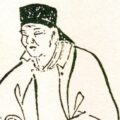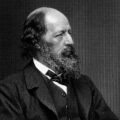Prose poetry remains one of the most misunderstood forms of poetry. Often confused with free verse, prose poetry eschews the technical, poetic techniques that are often used to give free verse its impact. Writing in the prose format often suffers the same criticisms as free verse poetry in that it is easier, or lazier, than traditional structured forms.
Hopefully, this article will help you to understand prose poetry a little better, highlight the differences between prosaic poetry, a traditional prose piece or piece of flash fiction, structured poetry and even free verse itself.
Contents
- 1 What Is Prose Poetry?
- 1.1 Is Prose Poetry A Kind of Free Verse?
- 1.2 What Makes Prose Poetry Different From Plain Prose?
- 1.3 What Literary Techniques Are Often Used In Prose Poetry?
- 1.4 What Does Prose Poetry Normally Focus On?
- 1.5 How Long Do Prose Poems Need To Be?
- 1.6 How Do I Identify A Prose Poem Compared to Regular Prose?
- 2 What Is The History Of Prose Poetry?
- 3 How Popular Is The Prose Poetry Form Today?
- 4 How Do I Write A Prose Poem?
- 5 What Are Some Examples Of Prose Poems?
- 6 What’s The Difference Between Prose Poetry & Narrative Poetry?
- 7 What’s The Difference Between Prose Poetry & Flash Fiction?
- 8 Who Famously Wrote Prose Poetry?
- 9 How Do I Recognise If A Poem Is Written In Free Verse Or Prose Poetry?
- 10 What Are Some Tips For Writing Prose Poetry?
What Is Prose Poetry?
Prose poetry is a hybrid genre of writing that combines elements of both prose and poetry. Rather than presenting ideas in traditional poetic form with line breaks, rhyme schemes, and a focus on sound devices such as alliteration and assonance, it employs many of the conventions of prose writing such as paragraphs, sentences, and dialogue.
At its simplest prose poetry definition, it is a blending of both prose and poetry to create a unique style that is more condensed than prose but with the same linearity as traditional narrative. Prose poetry often uses poetic devices such as imagery and metaphor, while still maintaining its storytelling qualities.
Is Prose Poetry A Kind of Free Verse?
Prose poetry isn’t technically a form of free verse, although the two do share many similarities. For example, both can rely on a rejection of standard or traditional poetic forms and structures, such as stanzas. However, free verse doesn’t necessarily need to borrow techniques or structure from traditional prose writing.
What Makes Prose Poetry Different From Plain Prose?
Prose poetry is distinctly different from plain prose as it makes an effort to capture the aesthetic qualities of a poem, such as rhythm and meter. It also often employs more condensed language and structure than traditional prose, making it more succinct while still maintaining narrative qualities. Additionally, the tone of prose poetry is often more lyrical and poetic than that of plain prose.
Prose poetry also typically uses a lot of imagery and figurative language, which helps to create an atmosphere or mood that can be felt even if the poem doesn’t have a traditional structure.
What Literary Techniques Are Often Used In Prose Poetry?
The literary techniques used in prose poetry often come from both the traditional world of poetry and the realm of fiction. In addition to imagery, metaphor, and simile (which can be found in both genres), prose poetry may also utilize personification, diction, juxtaposition, irony, hyperbole, allusion, and other literary devices.
What Does Prose Poetry Normally Focus On?
Prose poetry often focuses on everyday moments or experiences, typically with a deeper meaning. It may also explore the feelings and emotions experienced in those moments, often without explicitly stating what those feelings are.
One of the most distinctive qualities of prose poetry is that it has a narrative quality to it—it’s not just about presenting an idea or emotion, but it’s also about telling a story.
How Long Do Prose Poems Need To Be?
There is no definitive answer to this question as there are no set guidelines or rules for how long a prose poem needs to be. That said, many prose poems tend to be shorter than traditional narrative poems and don’t run much longer than one page. They may also make use of shorter sentences and more concise language in order to keep their length to a minimum.
How Do I Identify A Prose Poem Compared to Regular Prose?
Prose poetry tends to stand out from regular prose due to its focus on imagery and figurative language, as well as its more lyrical tone. Additionally, the narrative elements of prose poetry can be quite distinctive and will often contain an underlying message or moral.
When reading a piece of writing, it’s helpful to pay attention to the structure of sentences and paragraphs, as well as the use of literary devices, in order to identify whether a piece is prose poetry or just plain prose.
What Is The History Of Prose Poetry?
The history of prose poetry goes back to at least the 19th century. French poets such as Charles Baudelaire, Arthur Rimbaud, and Stéphane Mallarmé were among the first to experiment with blending traditional poetic elements with that of prose writing. In the 20th century, American poet James Schuyler is credited with popularizing the form.
Today, prose poetry is an established genre of literature and many poets and writers continue to explore its possibilities. From novels in verse to experimental works, there’s no shortage of creativity when it comes to the prose poem.
While it is quite easy to discover prose poetry examples, it can be difficult to find prose poems which have gained a substantial readership in the last generation or so.
The dominance of free verse poetry, while being an incredible poetic form, has had an impact on the prevalence of other forms of poetry, including prose poetry. In fact, you’re more likely to read poetic prose (which is well-written, image-heavy prose) rather than prosaic poetry as a poetic form.
How Popular Is The Prose Poetry Form Today?
Today, prose poems as a form aren’t exactly popular, but it does continue to have some readership, particularly online. A large number of Instagram poets, for example, along with other digital poets, regularly write and share prose poems. Additionally, there are several online magazines dedicated to this form of poetry, where you can find examples that explore different styles, themes, and topics.
Overall, prose poetry is a unique literary form which continues to have influence in the world of literature today. It provides poets with an opportunity to play with traditional forms and creative expression in a way that most poetry doesn’t allow.
How Do I Write A Prose Poem?
When writing a prose poem, it’s important to keep in mind that you are blending both poetry and prose. As such, think of the piece as being narrative-based but with poetic elements woven throughout.
To do this, focus on creating vivid imagery and using figurative language to convey emotion, setting, or feelings without explicitly stating them.
Additionally, it’s important to keep the poem concise and focused on one idea or emotion.
As with any form of poetry, there isn’t really a hard guide that you can use to create a poem, and certainly not a good poem. Unless you’re working to a fairly strict structure, such as a haiku, tanka or sonnet, there isn’t anything dictating what you need to write about when you write prose poetry.
While that can be immensely freeing, it can also be somewhat paralysing or problematic if you just want to sit down and start writing poetry.
But that, of course, opens up a whole other discussion about what it means to be a poet, and whether its a decision or a compulsion to write poetry.
Do Prose Poems Need to Rhyme?
No, prose poems do not need to rhyme. While some writers may choose to use rhyme or other poetic techniques within a prose poem, it’s by no means necessary and is often not found in the genre.
The focus of writing and reading a prose poem should be on the narrative elements and imagery used, as writing prose poetry is more about conveying an emotion or idea through words than creating rhymes to structure the poem’s flow or pace.
What Do Prose Poems Look Like?
Just like with any other type of poem, there is no one way that a prose poem should look. However, they are often written in shorter paragraphs or sentences, as opposed to the larger passages of traditional narrative poetry.
Additionally, since a prose poem doesn’t necessarily have to rhyme or follow a set structure, it isn’t required to utilise line breaks or enjambment to create a sense of rhythm or flow. Instead, any pacing or musicality within the poem needs to be entirely generated through the use of carefully chosen words, imagery and punctuation.
Do Prose Poems Have Stanzas?
No, prose poems do not have stanzas. However, prose poems may be organised into sections or parts in order to better convey the narrative of the poem and maintain focus on its main idea or emotion.
Organising a prose poem into sections can help keep readers engaged and ensure that ideas are clearly articulated and presented in an easy-to-understand manner.
Ultimately, the structure of a prose poem is up to the writer, and there really aren’t any rules dictating how it should or shouldn’t look.
Regardless of the form it takes, however, a successful prose poem will be able to effectively convey its underlying message in an interesting and engaging way.
Are Prose Poems Written In Paragraphs?
Yes, prose poems are typically written in paragraphs. However, there is no set structure that must be adhered to when writing a prose poem.
Just as with any other type of poetry, the author has creative freedom when it comes to deciding how the poem should be structured and presented on the page.
Short sentences or even single words can be used to convey emotion or ideas, and the length of each paragraph is entirely up to the writer.
It’s also entirely feasible that prose poetry is written in one solid black, rather than being broken up into paragraphs. It all depends on a range of factors, including the poet’s decisions, the topic, the kind of pace you want to set and so on.
What Are Some Examples Of Prose Poems?
In the English Language, there are thousands of examples of prose poems. These are largely the domain of American poets, such as Walt Whitman, Sylvia Plath and Langston Hughes, but there is still a significant number of British poets and poets from elsewhere in the world working or who have previously worked, in this form.
Here are some examples of some famous prose poems:
- ‘We Real Cool’ by Gwendolyn Brooks
- ‘The Desire To Paint’ by Charles Baudelaire
- ‘The Sky Is Low, The Clouds Are Mean’ by Emily Dickinson
- ‘The Story of an Hour’ by Kate Chopin
- ‘A Dream within a Dream’ by Edgar Allen Poe
Prose poetry can also be found in other languages, including Spanish and French.
Perhaps the most renowned example of this is Gustavo Adolfo Bécquer’s Rimas (Rhymes), a collection of lyric poems written in prose.
When it comes to writing and reading poetry, prose poems are often overlooked or seen as a less-serious form. However, they can be some of the most powerful pieces of literature available and should not be ignored or dismissed out of hand.
For example, Baudelaire’s prose poem “The Desire to Paint” is full of powerful literature, and strong, abstract imagery – if this were structured in the form of free verse, it wouldn’t be less powerful, but we would read it differently. Remember, there is a reason that Charles Baudelaire, one of Europe’s most evocative poets, chose to write and structure in this way:
“Unhappy perhaps is the man, but happy the artist, who is torn with this desire.
I burn to paint a certain woman who has appeared to me so rarely, and so swiftly fled away, like some beautiful, regrettable thing the traveller must leave behind him in the night. It is already long since I saw her.
She is beautiful, and more than beautiful: she is overpowering. The colour black preponderates in her; all that she inspires is nocturnal and profound.
Her eyes are two caverns where mystery vaguely stirs and gleams; her glance illuminates like a ray of light; it is an explosion in the darkness.
I would compare her to a black sun if one could conceive of a dark star overthrowing light and happiness.”
What’s The Difference Between Prose Poetry & Narrative Poetry?
The main difference between prose poetry and narrative poetry is structure. Prose poems are typically written in short paragraphs or sentences, while narrative poems often have longer passages of text and employ line breaks and enjambment to create a more lyrical feel.
Narrative poems often focus on telling a story or recounting an experience, while prose poems can be more abstract and focus on the power of words and imagery to convey an emotion or idea.
Ultimately, it’s up to the individual writer to decide what type of poetry they want to create, but it’s important to note that both forms have their place when it comes to creating powerful pieces of literature.
What’s The Difference Between Prose Poetry & Flash Fiction?
Flash fiction is a form of prose writing that focuses on exploring a narrative in as few words as possible. The most popular example is a six-word story, but the form can also be extended to stories of 2,000 words or fewer (often causing some confusing cross-over with short stories).
Prose poetry is similar in that it also relies on short passages of text to convey an idea or emotion. But unlike flash fiction, prose poems are often more abstract than narrative, focused on exploring an idea or image than telling a concrete story.
Who Famously Wrote Prose Poetry?
Some of the most famous poets who wrote in prose include Walt Whitman, Sylvia Plath and Langston Hughes.
Other notable poets include Robert Frost, Emily Dickinson, William Carlos Williams, Kate Chopin and Edgar Allen Poe.
Famous Spanish-language writers such as Gustavo Adolfo Bécquer have also worked in this form, along with French poets such as Arthur Rimbaud and Charles Baudelaire.
Prose poetry is an incredibly diverse form of expression, so while the writers mentioned above are some of the most well-known practitioners of this type of poetry, there are many more talented poets out there exploring this fascinating style.
How Do I Recognise If A Poem Is Written In Free Verse Or Prose Poetry?
It can be understandably confusing when you come to differentiate between free verse and prose poetry. For example, both of them can share the same rejection of traditional poetic form and techniques, such as rhyme, enjambment and so on.
However, looking at the structure of a poem will typically help you on your way to understanding the precise form of a poem. It’s common that there are cross-overs – for example, a free verse poem might also be prosaic in its composition, or a prose poem may rely on free verse as its essential language.
As a practical example, let’s take a look at one of my favourite imagist poems, “The Red Wheelbarrow”, by William Carlos Williams.
so much depends
upon
a red wheel
barrow
glazed with rain
water
beside the white
chickens
While you might consider this a prose poem due to its simple language, its actually a free verse imagist poem because of a few distinct factors. For example, the line breaks within each stanza, and the presence of the four stanzas themselves immediately mean that this piece of work cannot be categorised as a prose poem.
If we were to rewrite it as a prose poem, there are a few factors we’d need to change:
Firstly, the removal of the line breaks.
Secondly, the removal of the stanzas.
Thirdly, the inclusion of punctuation to make this poem make grammatical sense from a prosaic perspective.
The end result would look something like this:
“So much depends upon a red wheel barrow, glazed with rain water, beside the white chickens.”
Here you can see that, while the poetic language, the strong imagery and so on remains the same, the changes to its form reveal a fundamnetal change to it structure and impact. None of the images within the work are given the chance to be explored alone. While remaining an imagist poem, the individual images themselves are pushed into a single image, which fundamentally changes the overall impact of the work.
What Are Some Tips For Writing Prose Poetry?
As I’ve said many times, writing poetry is something that should be wholly personal and, in my opinion, you shouldn’t necessarily choose a particular form and bend your intentions to suit it. Forms came about because they’ve been seen as a good framework for certain ideas or thoughts – no one woke up one day and said “You can only write in the sonnet form, everything is else is worthless.
With that in mind, here are a couple of tips if you’re looking to write in prose poetry:
- Make Sure There’s A Reason For It: If you’re going to write in prose poetry, you should make sure you know why. If you traditionally write in prose, it can often seem like the next logical step, as you can work within the parameters of something you already know well. However, that doesn’t mean you should ignore other poetic techniques, such as rhyme, rhythm or structure. Good technical poets have an understanding of techniques, even if they neglect to use them, or deliberately avoid them. Poetry is so much more than just writing a good sentence – its a combination of language, technical understanding, imagery and so much more.
- Don’t Ignore Punctuation: If you can’t use line breaks or other traditional poetic tools, then you need to be clever with your use of punctuation. Full stops, for example, can be used cleverly to cut sentences and even thoughts short, highlight certain words and draw attention to specific phrases. Don’t just write in simple sentences unless those sentences are a deliberate construct to further improve your poem.
- Focus on Imagery: Prose poems, as we discussed above, aren’t narrative poems. Therefore, you should just use them to tell a simple narrative. Instead, use them to present beautiful themes and images, in much the same way as you would with other forms of poetry. Prose poetry is so much more than poetic prose, and you can’t afford to forget it.
- Glossary of Japanese Poetry Terms - 26 February 2025
- What is Waka Poetry? - 23 May 2024
- How to Identify the Kigo in a Haiku: - 22 March 2024





